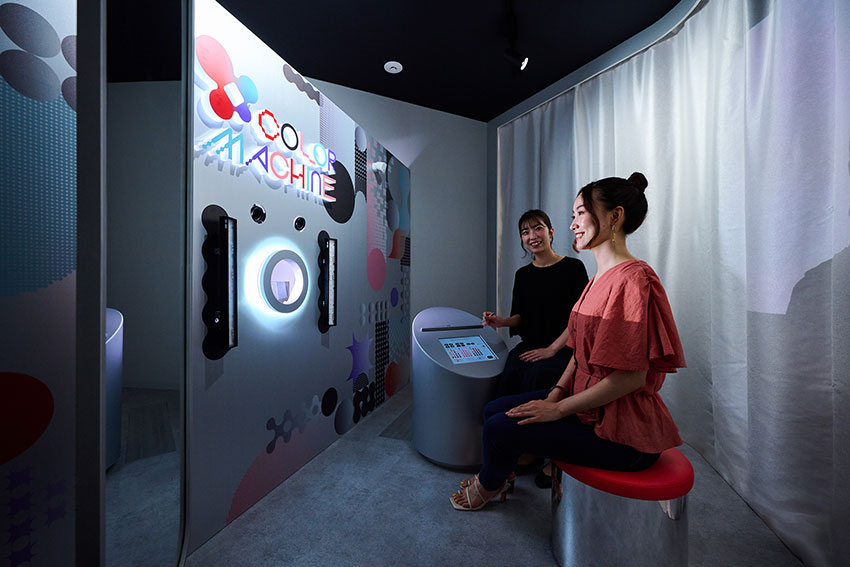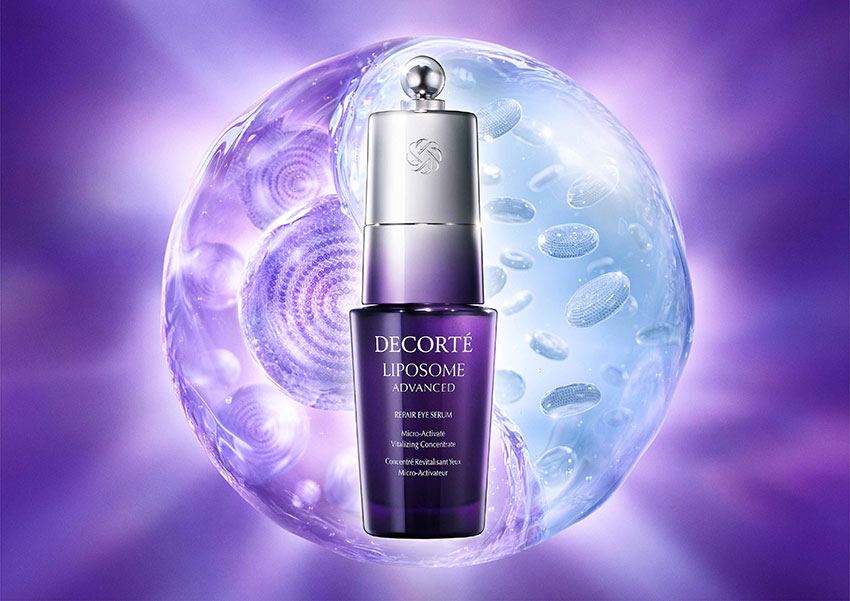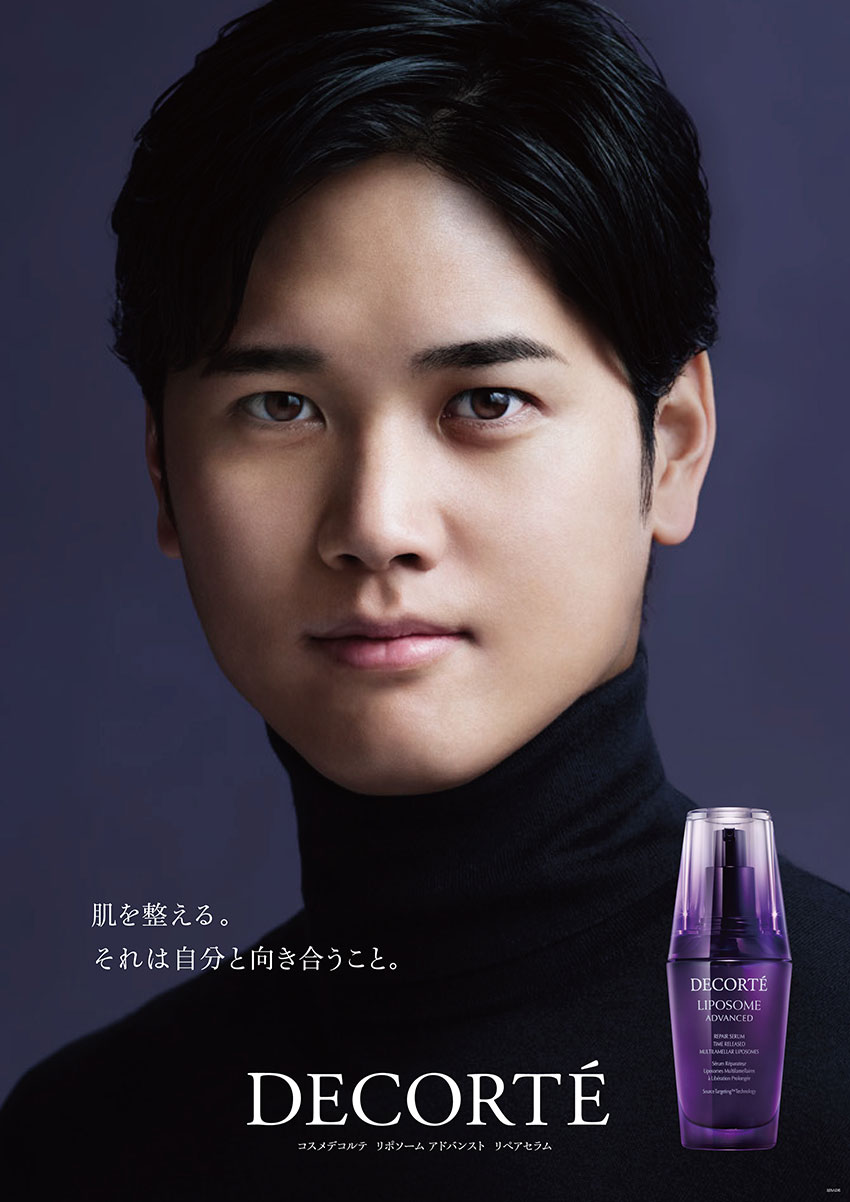With the aim to create beauty in a sustainable world, KOSÉ performs R&D to ensure the integration of state-of-the-art innovation in their products’ ingredients and technologies. We spoke with President & CEO Kazutoshi Kobayashi to learn more about their initiatives to grow in the global market.

In the last 30 years, Japan has seen the rise of regional competitors who have been able to replicate the Japanese model of success. This is especially true in cosmetics. The biggest rival to J-Beauty is K-Beauty from South Korea, which has gained momentum in recent years due to the increased popularity of Korean culture. Despite this, Japanese firms are still leaders in the high-end cosmetics field. How have Japanese cosmetic firms been able to maintain leadership despite the stiff regional competition?
Unlike the automobile and other industries, the cosmetics industry was the first industry to be liberalized after the war. On the other hand, the cosmetic industry was left to compete with other companies such as Revlon and Max Factor. At the time, it was said that the black ship was coming to Japan and Japanese companies were so fearful that they will go out of business, but they remained competitive by going through the struggles.
KOSÉ was founded by my grandfather. At the age of 14, he entered the cosmetics industry and at the age of 50, after WWII, he established the company. Since the beginning, we have always been particular about the quality and safety of the ingredients of our cosmetics. These determined the quality of our products.
The foundation of our R&D was laid by my father, who was a chemist. His knowledge and innovative technology have led to what KOSÉ is now. Another turning point for KOSÉ was in 1963 when we established a joint venture with France’s L'Oréal that continued for 40 years. We learned about the French style of beauty and promotion, especially in the field of hair beauty, and we had the number one share in the hair salon industry when we were working with L'Oréal. We amicably parted ways with L'Oréal.
Some innovative technologies we are seeing in cosmetics are smart beauty and personalized products. This has revolutionized the sector and many firms are beginning to invest in technologies in it including L'Oréal with their Perso. Your company developed the Mixed Reality (MR) makeup colour machine that can replicate colour and texture on the skin realistically, which AR cannot do. What are your expectations for MR makeup moving forward? In general, what is your take on smart beauty and the personalization of beauty products?
A few years ago, we started emphasizing using digital technologies in developing and promoting our products. For the past six years or so, we have been collaborating with a number of startups in the field of digitization in an open innovation scheme, an initiative we call "Link". The young generation of our employees worked together to pursue innovation. Five years ago, we conducted research on the combination of quantum computers with AI to prescribe, analyze or determine ingredients needed for a person or product. In the past, this could not be done without the know-how to assemble formulations, but digital tools have made it possible to analyze and reproduce products quickly. Digital technology can be used to recreate the feel of popular products or provide personalized formulas for cosmetics.
Korean cosmetic manufacturers are ahead in terms of digital tools, so we are trying to create our own unique technology such as our Color Makeup Machine. We have showcased it in a Las Vegas CES Exhibition. In four days, we had 1,200 visits, so it was a huge promotional success. We also have ongoing projects on digitalization and personalization that we cannot share at the moment. My dream is to have a system where each person can receive a personalized prescription for skincare and cosmetics through our brand. Currently, we are planning a new cutting-edge factory in Yamanashi in the Southern Alps that will cater to personalized cosmetics.

You have several brands and one of the main ones is Decorté. This month, you released a new product called Liposome Advanced Repair Eye Serum. How is this product better than its competitors, and how do you plan to further grow this brand?
We are the first company to create the category of beauty essence. In Japan, there used to be only three categories: lotion, moisturizer and milk. We have contributed to adding a fourth category to it, that of serums. In the 1970s, we launched the RC liquid, one of the first type of serum that became popular.
We launched the Liposome serum 30 years ago and renewed it with our technologies and improved its quality, texture and effectiveness. Today, we launched our cream and eye serum. It was so popular that we received a lot of pre-orders. Our previous Liposome series, the same basic ingredients were used and applied to creams and eye serums. we had the same kind of products like creams and eye serums that are conventionally applied horizontally. The products have the same ingredients but take on different forms. This time, we developed each product with its own ingredients and efficacy. It is specifically designed to accomplish a specific purpose. This is the biggest change in our product.
Our Liposomes are so successful because we were able to clearly prove the effectiveness of our cosmetics. An example is 1 trillion nanocapsules within a drop. Another example is the night cream, which makes the skin look more rested for three hours than usual. These types of scientific evidence have supported our products to be selected as the best cosmetics. Our serum is popular in North America, Europe and China, so we are looking forward to expanding overseas.

Cosmetics are usually oriented more toward female consumers, but we are starting to see a growth in men's cosmetics too. As male cosmetics continue to grow in popularity, what opportunities do you see for your firm, and do you plan on creating brands to cater to this specific market?
KOSÉ shifted its marketing strategies based on our 3G – global, gender, and generation. We are not confining our products to only certain genders. For some time now, the question of whether or not to create a men's version of "Sekkisei" or "Liposome" has been on the company's internal agenda, but I have always refused to make anything "for men" because I want to keep our products genderless. The relaunch of our brand this time has genderless packages and fragrances.
More men are becoming aware of beauty products, so it is a good opportunity for us to make our products adaptable to a wider range of consumers and markets. With Covid-19 and the prevalence of remote conferences, men are starting to see their appearance on big screens for a prolonged period of time. They started to feel conscious about how many spots and wrinkles they had. Also, with the popularity of male K-pop groups, people are becoming less hesitant in wearing makeup. With our marketing that stressed Sekkisei and Liposome are genderless, our counter is receiving more visits from men.
Baseball star Shohei Ohtani posted a photo himself of his locker room with Decorté products on his Instagram. This went viral, and even people who might not be interested in baseball said that the reason Shohei Ohtani is fair-skinned is because of KOSÉ cosmetics. Thanks to that, some of our e-commerce product sales have gone up ten times more than normal. It has also been featured daily on television.
The marketing strategy of KOSÉ is not to use popular stars only because of their current fame. We often work with our endorsers for a long time. As an example, the figure skater Yuzuru Hanyu was someone we worked with for more than 10 years. We plan to work with Mr. Ohtani for a long time. In our presentation, we let him know that we are here to protect his skin and to create a culture where baseball players will have a habit of putting on sunscreen before they practice. We gave our products to Mr. Ohtani to use, him and his manager researched us and our company. Even though he was also presented with offers from other Japanese cosmetic companies, Mr. Ohtani chose KOSÉ, and we are grateful for that. He has a policy of not promoting products that he himself does not use, so he chose to represent us because he is actually using our products.
We are grateful and happy with Ohtani’s success and we are hoping that he can help us with our US marketing.

You came up with the world’s first equation that can accurately predict future wrinkles based on current skin conditions. As a result, you can prescribe adequate skin and wrinkle care methods. Can you tell us more about how you developed this formula, and what were some of the challenges you had to overcome during its development?
We are strong in the brightening sector, and we also have a big share with products that use kojic acid as an ingredient. Sekkisei uses hatomugi. In recent years, wrinkle care has become a competitive market. Japanese companies such as Shiseido, Pola and other Western companies compete in this field. Now, we can measure the depth of wrinkles and there are many anti-wrinkle products on the market. Pola just launched their new product shortly before we did, which was a product that reduces wrinkle depth. The niacinamide-based wrinkle care product we launched has been a hit.
We shifted our focus from dealing with current wrinkles to the prevention of wrinkles by maintaining healthy skin. We are now focusing on the use of iPS (induced Pluripotent Stem Cells) and we collaborated with Professor Yamanaka. Last year, Professor Yamanaka retired from his official position at the Research Institute and is now conducting his own research, where he can freely conduct applied research for iPS and socially engage and work with the members of private companies. He became interested in the beauty sector, so we are now doing joint research. He goes to Gladstone Research Center monthly, so he was very grateful when we sent him one of our talented researchers as his assistant.
Are you looking to establish more partnerships with academics, like Professor Yamanaka, or with foreign companies to increase your presence overseas?
The cosmetics industry has grown so much. The definition has now expanded to not just beauty but also wellness and medical aspects. The target used to be people from 20–50 years old, but now it involves all ages, from newborns to advanced ages. Cosmetic applications have such a wide range.
Collaborating with companies in each niche field is very important for us to penetrate different markets. We collaborated with Maruho, a pharmaceutical company that produces dermatological and medical drugs for allergies such as atopy. We have been working together with them to produce a nonmedical product, but a light cosmetic that caters to people with allergies. The new collaboration with Kao focusing on sustainability would not have happened if the era of sustainability didn’t become mainstream. Working with our competitors before was unimaginable. We call this “KOSÉ Beauty Partnership”, and we would like to continue to actively collaborate with various stakeholders to expand it.
With our international strategy, we are currently focusing on China in the Asian market. Thanks to our acquisition of Tarte, we were able to learn more about the US market, but our next focus is the expansion to Europe, India, Africa and the Middle East. We have to actively take steps to be present in overseas markets.
Imagine we come back in four years and have this interview all over again. What targets and goals would you like to have achieved by then?
In 2024, there is the Olympics and in 2026 we will commemorate our 80th anniversary. Our midterm plan is called Vision 2026 which targets JPY 500 billion as our sales turnover. Recently, I visited London, Edinburgh and Paris to explain this to our investors and shareholders They have condemned the CFOs for the low target on annual profits. Many investors are saying that the 2026 target is impossible to achieve with Covid-19. However, I keep saying that post-pandemic and with our 3G strategy, we can expand our sales drastically to achieve our goal. When you come back, I would like to be able to tell you and our investors that we have reached our goal.
Interview conducted by Karune Walker & Ana Ruiz
0 COMMENTS